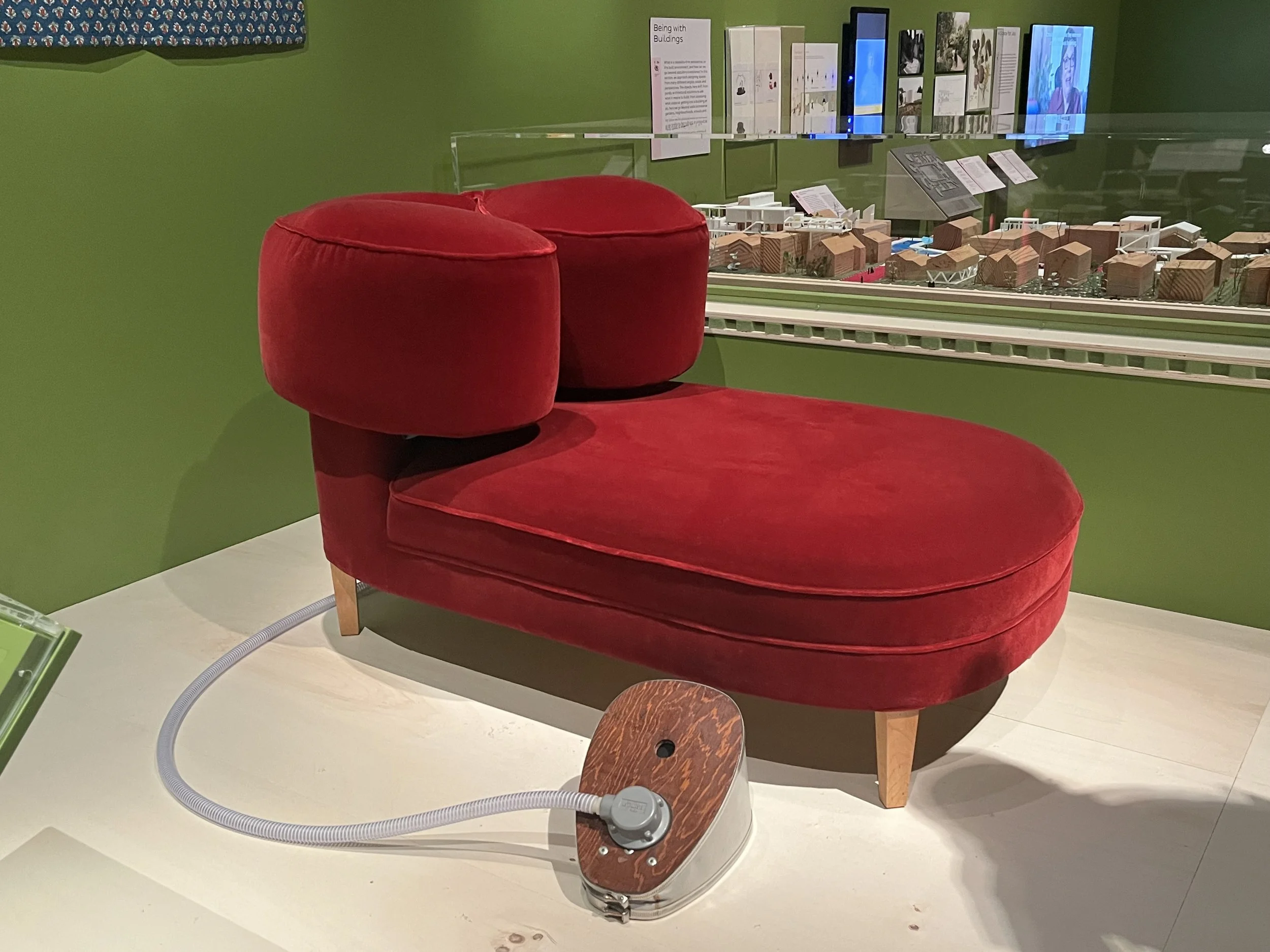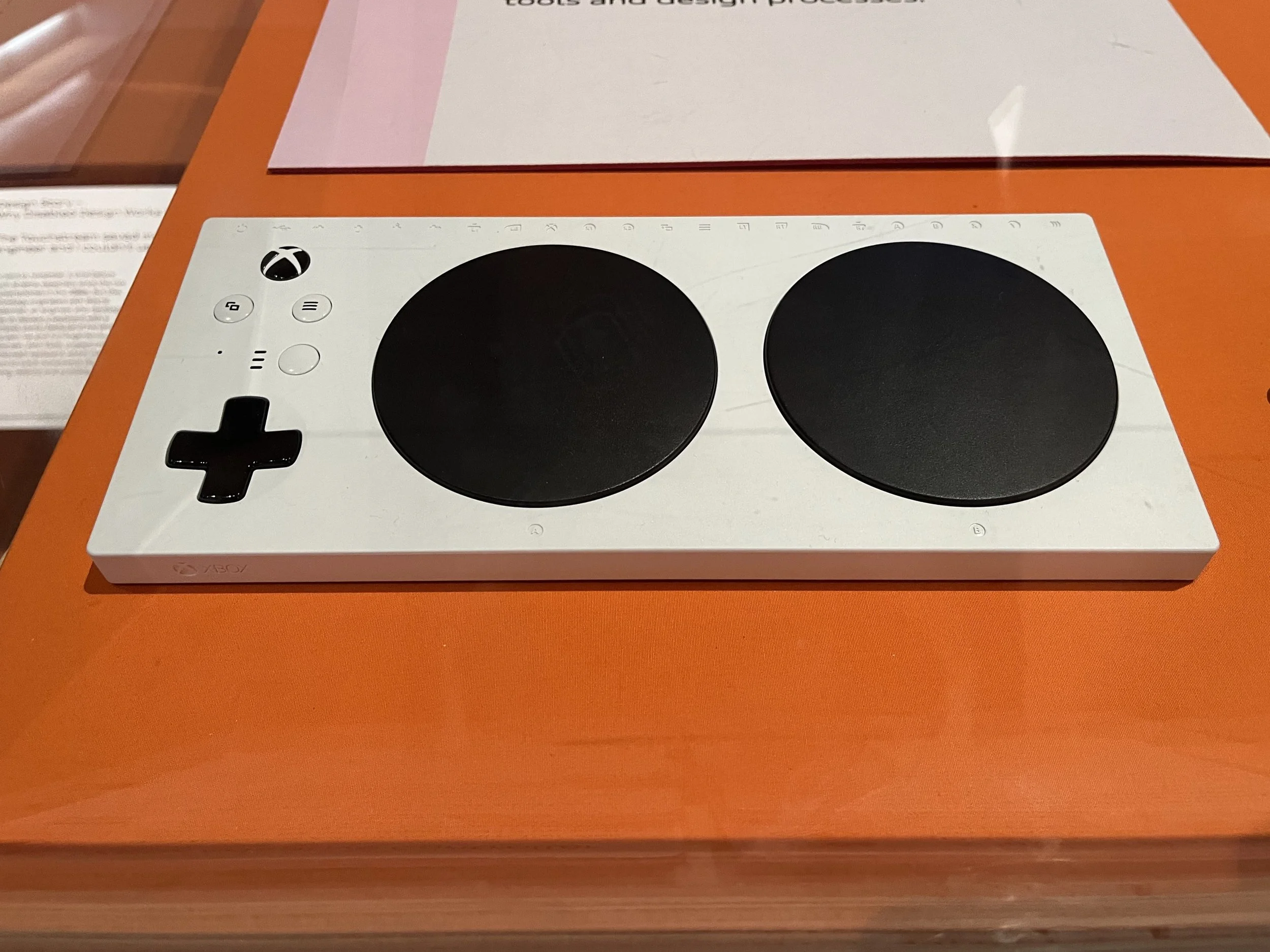design + disability
MEETING THE NEEDS OF DISABLED PEOPLE THROUGH DESIGN - A V&A COLLECTION.
Over the summer I visited the exhibition in the Victoria and Albert Museum, ‘Design and Disability’, which was a real eye opener into the way the world of design has adapted to, or in many cases not adapted to, the lives of people with disabilities.
One of the many items on display that caught my attention was the ‘Squeeze Chair’, a collaboration between Wendy Jacob and Temple Grandin. Grandin, a scientist who is diagnosed with autism herself, worked with artist Wendy Jacob to create a lounge chair which essentially gives the person a tight hug. Autistic people often find a ‘squeezing’ sensation can help calm them down and put them at a sense of ease.
The original idea for the chair actually stems from Grandin’s teenage years, when she made her own ‘hugging machine’. Wendy Jacob took this idea further and turned it into a decadent lounge chair which not only serves a function but makes a beautiful and striking piece of furniture. What I personally enjoy about this chair is that it doesn’t hide away from its purpose - but rather leans into it, being unapologetically visible in its function of helping people with autism and making something of beauty from it.
Another item that I found fascinating was the adaption of an Xbox controller, made by Microsoft in collaboration with disabled gaming communities. Gaming is an activity that people without disabilities may never face any difficulty participating in - as a hobby associated with leisure and relaxation it should be as easy as possible. However for many people with disabilities. this is not the case. Holding a strong grip on a controller can cause pain, as well as having to simultaneously hold a controller, move the joystick and press buttons.
This adapted controller has a flat surface which allows the person to place it onto their lap, in addition to having large flatter pads to replace the joystick which gives more surface area to touch. Having controllers which are accessible is important as it allows disabled and non-disabled persons to play together, getting rid of barriers within the gaming community.
I found this exhibition particularly interesting as it displayed products which have been designed alongside and in collaboration with disabled people - rather than generic attempts at meeting the needs of a community from a distance.
These were just two items from the ‘Design and Disability’ exhibition at the V&A, which was an amazing display of the progress made around disabled people within design, as well as highlighting further changes that need to be made within society to make accessibility the norm.

